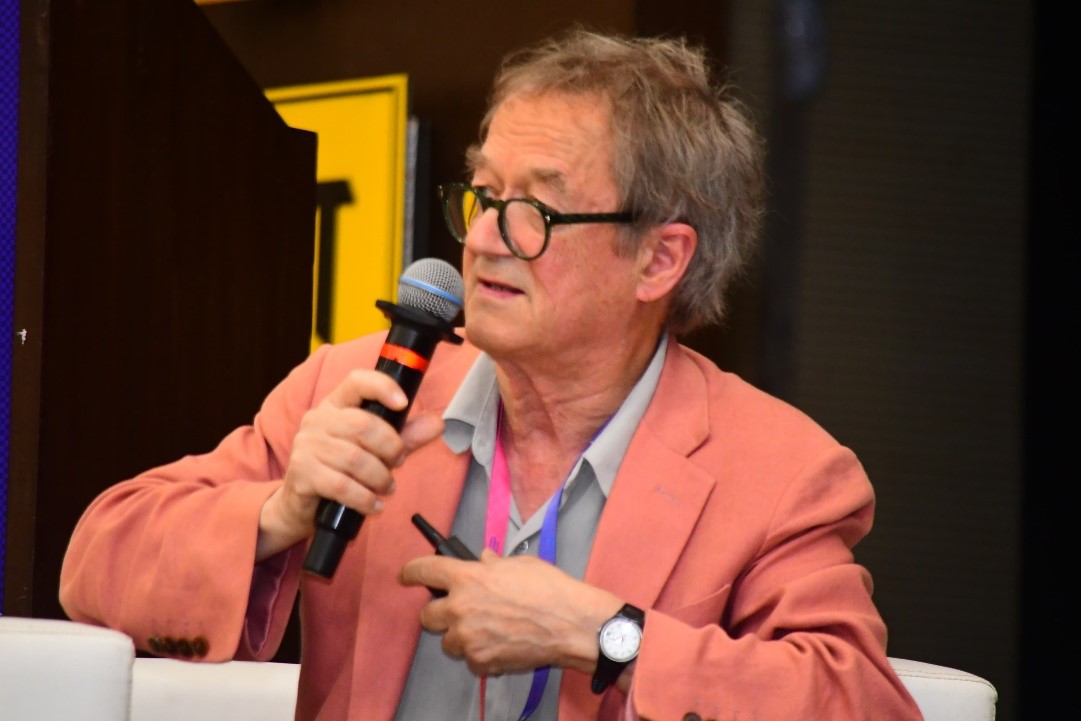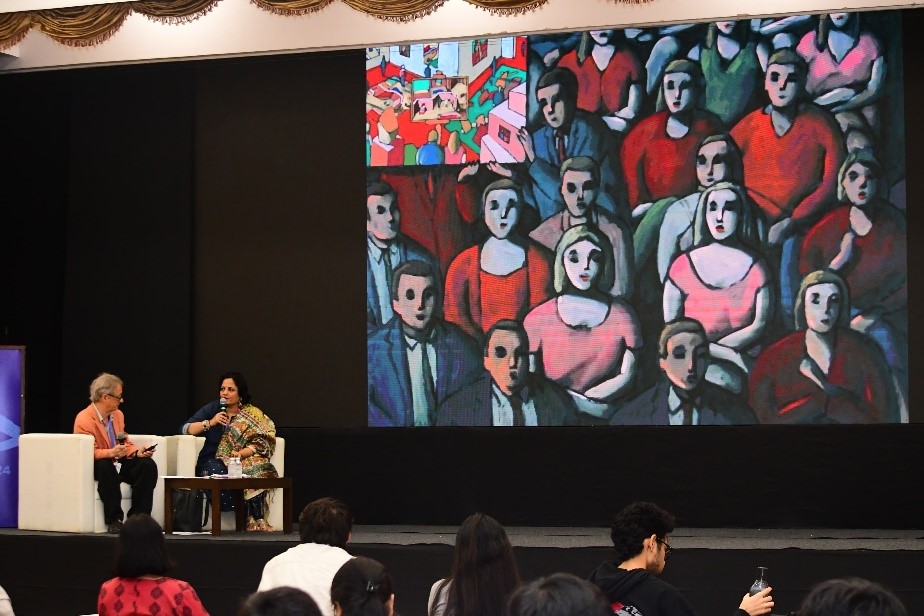Swiss animation filmmaker Georges Schwizgebel chaired a master class session titled “Georges Schwizgebel’s Approach to Animation” at the 18th Mumbai International Film Festival (MIFF) today. The session, held on the sidelines of film screenings, showcased Schwizgebel’s illustrious career and his unique techniques in animation.
Schwizgebel, whose 2004 paint-on-glass animated film “The Man with No Shadow” (L’Homme sans ombre) has garnered international acclaim. He has been a prominent figure in the animation industry for over 50 years. During the interactive session, he expressed his enduring passion for filmmaking, stating, “I like to draw and make films… I don’t know what to do, but make a film.”

Dhvani Desai, a reputed animation filmmaker, introduced Schwizgebel to the audience, highlighting the profound influence of various art movements and surrealism evident in his work.
Speaking at the event, Schwizgebel shared insights into his creative process. He revealed that he continues to use acrylic painting for his frames, along with a digital camera, although he noted that modern animation artists have transitioned to different tools. “It is no longer useful to teach this technique,” he remarked, acknowledging the evolution of animation techniques over the decades. He also mentioned his occasional use of dry pastels.
Elaborating on his filmmaking approach, Schwizgebel explained that most of his films feature music rather than dialogues, emphasizing that animation can convey much through imagery alone. He discussed his method of using loops and cycles at 25 frames per second and the technique of changing backgrounds every 16 frames to create dynamic visual narratives. “The connection between music and imagery is very strong,” he said, underscoring the integral role of music in his films.

In response to an audience question, Schwizgebel reflected on the changes in the animation industry since he began his career in the 1970s. He observed that there were more opportunities for animation shorts in the past but expressed his satisfaction that many filmmakers are now creating animation feature films.
The master class provided a rare opportunity for participants to learn from one of the animation world’s most respected figures, offering valuable insights into the art and craft of animation.
 Matribhumi Samachar English
Matribhumi Samachar English


